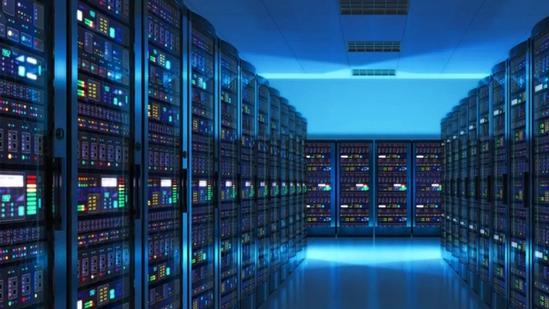Carl Sjölund: Tackling the Risks and Opportunities in AI Infrastructure


From World War II-era bombs to looming power constraints, AI infrastructure developers face an array of hurdles as they try to keep up with surging demand.
- The AI boom promises to transform the economy, but raises questions about overinvestment.
As technology companies race to develop more advanced artificial intelligence models, they’re pouring money into data centers and other infrastructure needed to power the AI revolution. Spending in the sector could rise to $600bn this year alone.
Although the boom promises to transform how people live and work, it’s raising questions about whether future revenue will justify the massive increase in investment. AI’s insatiable demand for energy is also straining the capabilities of electricity grids and sparking calls for a more sustainable approach.
It’s hard to predict how the story will play out. Technological advances in chip design, cooling systems, and power transmission could drive significant efficiencies, while Goldman Sachs predicts that data center emissions intensity – and possibly absolute emissions – could drop sharply over the long term.
We spoke with Carl Sjölund, a partner on EQT’s infrastructure team, about the opportunities and the risks in the AI infrastructure sector. EQT has invested in companies such as GlobalConnect, the operator of the largest fiber network in Northern Europe, and Scale Microgrids, whose on-site energy systems integrate solar power, battery storage and other technologies. Another EQT-backed company, EdgeConneX, is building capacity in energy-efficient data centers and focusing on sourcing electricity from renewable energy.
Q: McKinsey forecasts that nearly $7tn of data-center investment will be needed by 2030 to keep pace with demand. At the same time, there’s increasing concern about overinvestment. How do you mitigate the risks?
Sjölund: First, the growth in the market has been underestimated. If we look back at when EQT made the investment in EdgeConneX in 2020, the company has overperformed the plan we set out at the acquisition, and the growth rate is continuing to increase amid all the innovation. It’s a bit of a paradox in AI infrastructure. There’s risk both in overbuilding and in underbuilding. You mentioned the $7tn of potential investment. That sounds enormous, but AI workloads are growing faster than we’ve seen at any point in time.
It all comes down to disciplined capital deployment. When we’re committing capex, it’s backed by strong and long-term contracts with customers, including hyperscalers, cloud providers and large enterprises. That provides safeguards and means it’s customer-led rather than speculative. We’re focusing on places in the world where it makes sense, where there’s access to energy and underlying fiber infrastructure. It’s really important you’re close to your customers and planning a few years ahead.
Visibility on long-term revenue before significant construction gets underway helps reduce the risk and capture the benefits of surging demand.
Q: As companies race to build data centers, some worry they won’t have the power they need. How is that challenge being addressed?
Sjölund: Data centers are much more than concrete and steel. They’re about power and fiber infrastructure. By virtue of being a large investor in both digital infrastructure and renewable energy, EQT can help address challenges at the intersection of those sectors.
Even if it involves a data center that we do not own, we can help in securing power purchase agreements. With PPAs, you typically secure clean energy because that’s to a large extent what your customers want. For hyperscalers, it’s more about your carbon emissions than how the power is produced, so they’re turning more to nuclear power.
On-site power generation is also becoming more prominent. We’ve made an investment in Scale Microgrids to address that demand. That company brings flexibility to a rigid energy system, helping to reduce electricity costs and emissions. Two more EQT investments – Zelestra and Cypress Creek Renewables – signed agreements with Meta to build solar projects in Texas that will deliver clean energy to support the company’s data centers.
Q: What role can EQT play in navigating the complexities on the ground?
Sjölund: Our ‘locals-with-locals’ mantra – relying on local expertise and local relationships – helps us to unlock difficult situations in the countries where we invest. We can be proactive in permitting and getting access to land and power.
In the Nordics, GlobalConnect has been involved in building out fiber infrastructure to many of the hyperscalers. The company installed subsea fiber cables between Sweden and Germany and had to remove more than 200 World War II bombs in the Baltic Sea, which comes with delays and significant costs. The project also involved archaeological work spanning 1,300 square kilometers. Working with regulators on both sides and various agencies takes a significant amount of effort.
Q: Speaking of the Nordics, OpenAI announced its first European data center investment in Norway. Will we see more investment in the region?
Sjölund: In Europe, people talk about the data center hubs of Frankfurt, London, Amsterdam, Paris and Dublin. Those markets are becoming saturated when it comes to land, but also power.
Hyperscalers are looking for lower costs and speed to market. In the Nordics, there’s an abundance of renewable power from hydro, wind and nuclear, and that’s critical. You also have a cool climate, which makes it more efficient. That means you need to use less energy for cooling. Your capex spending per megawatt is likely to be lower in the Nordics compared with the rest of Europe. Add to that the geopolitical stability and regulatory alignment in the Nordic markets. Those factors will continue to drive more data center activity in the region. I believe we’re in the early innings.
GlobalConnect’s real strength is fiber, and there we have an 80 percent market share with the hyperscalers in the Nordics. We’re the ones really building out that network and riding that wave. Fiber infrastructure is a necessity for data centers, and we're spending hundreds of millions of euros per year to fiberize data centers across the Nordics.
Q: What innovation could disrupt the sector and what risks are being overlooked?
Sjölund: Everyone is focused on the explosion of power demand. That is real, but I think one should also focus on how much technology could bend the curve.
Training AI models is becoming more efficient. That will require less computing power per unit of performance, so a workload in 2027 could potentially consume a fraction of the energy it does today. Chips are also becoming better and more specialized every year. Companies will retire older chips and less efficient hardware, and that will lower power usage. There is also more efficient cooling being rolled out in new data centers.
As the market continues to grow, cybersecurity is always on your mind. You need to be bulletproof. The bottom line is that it’s hard to predict what the sector will look like in 10 to 15 years. But we’re always trying to stay ahead of the curve.
Carl Sjölund joined EQT Partners in May 2012 in the Infrastructure team. Prior to joining EQT Partners, Carl was at J.P. Morgan in London in the Mergers and Acquisitions team primarily focusing on telecom and transportation transactions. Carl holds an M.Sc. in Finance from Stockholm School of Economics. Directorships Current: Nordic Ferry Infrastructure, GlobalConnect Previous: NORD, Mongstad Group, Tampnet, Zayo, WASH
ThinQ by EQT: A publication where private markets meet open minds. Join the conversation – [email protected]
Spotlight OnInfrastructure
Exclusive News and Insights Every Week
Sign up to subscribe to the EQT newsletter.





